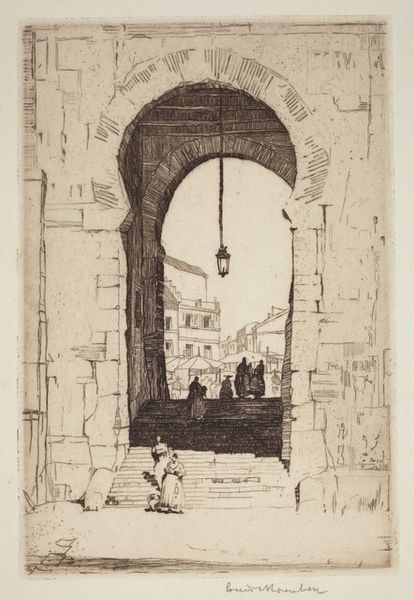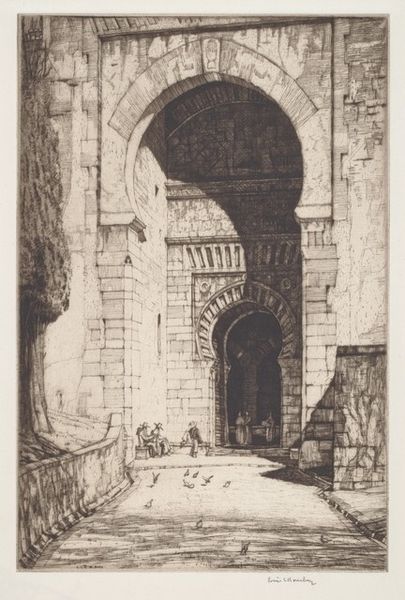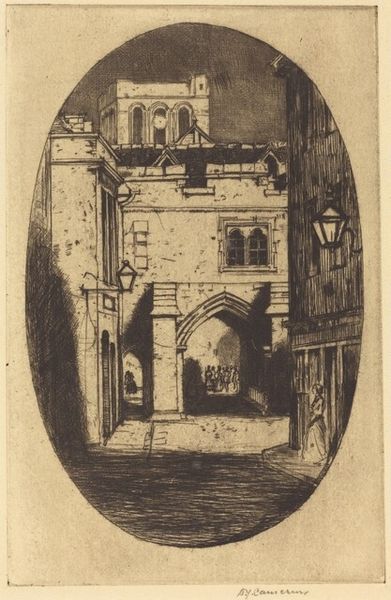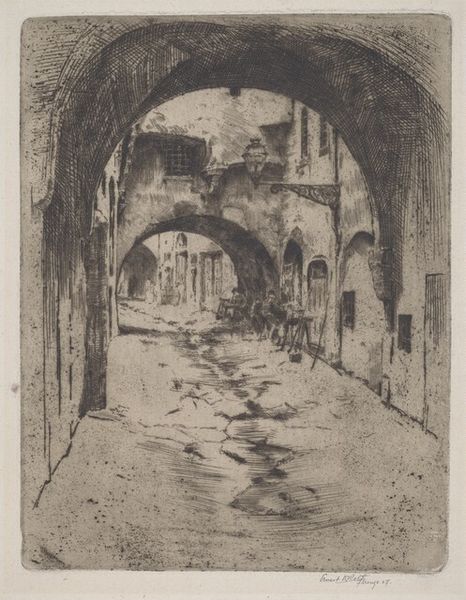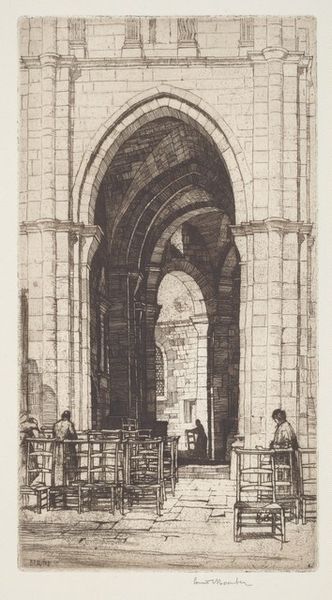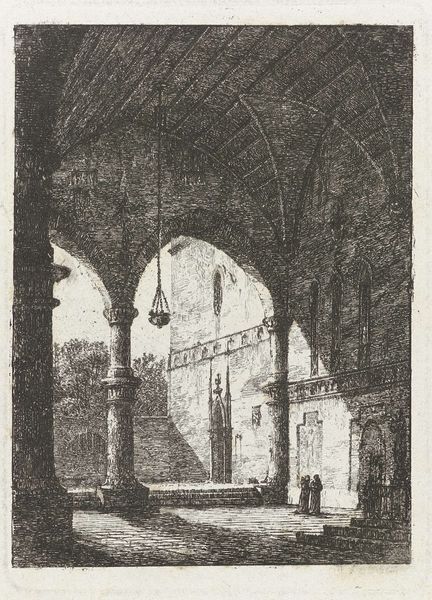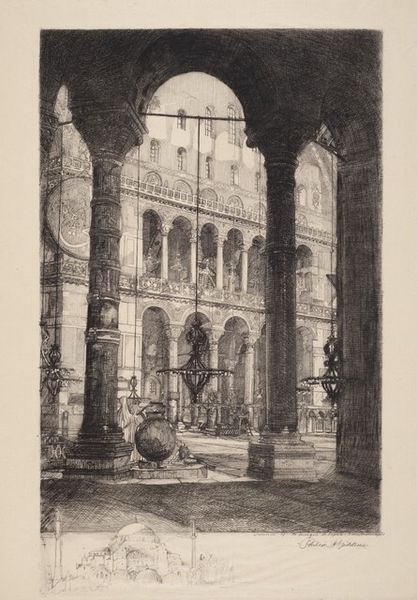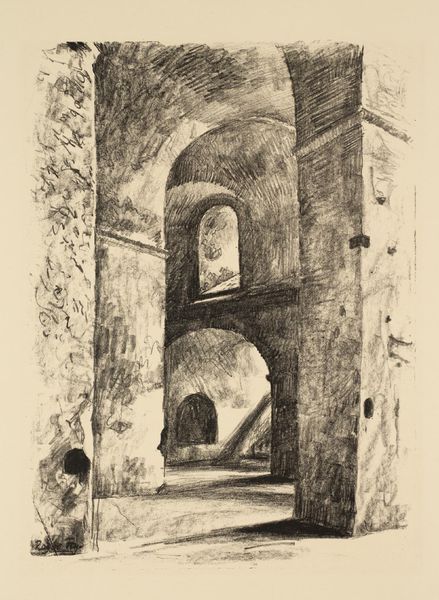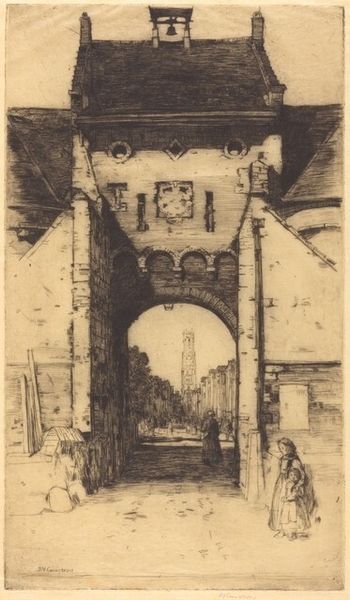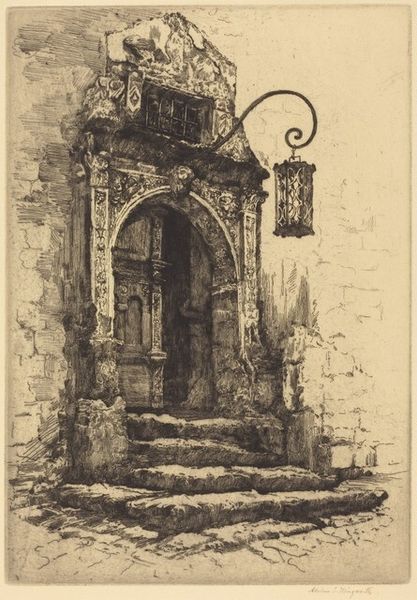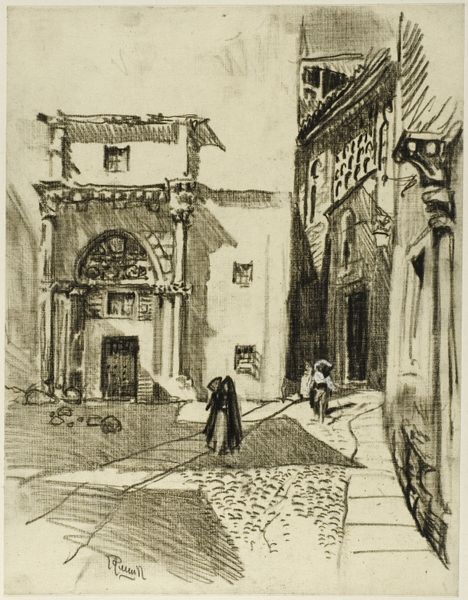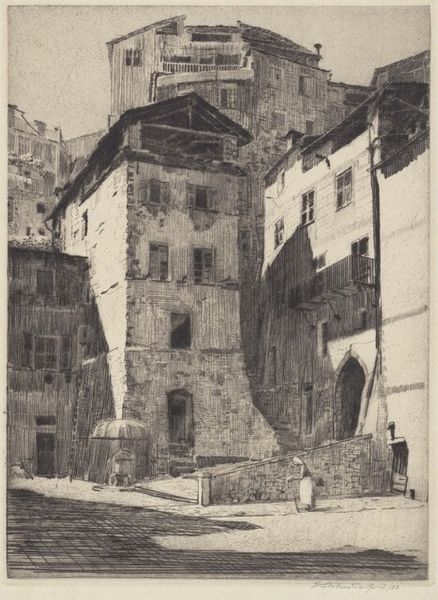
drawing, print, etching, ink
#
drawing
# print
#
etching
#
ink
#
cityscape
#
realism
Copyright: National Gallery of Art: CC0 1.0
Editor: This etching, "Plaza del Rey, Barcelona" by Louis Conrad Rosenberg, captures a slice of early 20th-century Spain. I’m immediately drawn to the contrast between the solid architecture and the almost ephemeral figures scattered around the plaza. What strikes you most about this print? Curator: I see a layered representation of power and social life intertwined. The Plaza del Rey, historically a space of royal authority, is here rendered as a site of everyday encounters. Look at the architectural dominance – the imposing stone, the arches. Does this structure dwarf the figures? What about those behind bars, perhaps reflecting imprisonment and different kinds of restrictions, maybe reflecting on who had the freedom to enjoy that public space and who did not? Editor: That’s a really interesting way to frame it. I was so focused on the aesthetic qualities, I hadn't really considered the potential commentary. How do we reconcile this possibly darker reading with the relatively serene scene? Curator: Well, that tension is precisely where meaning resides, isn't it? Art often holds contradictions. Think about how this scene contrasts private lives and open spaces, for example. Or how the sharp realism confronts very gentle human drama and small gestures of communication and encounter. The figures almost blend with their surroundings and architecture, yet seem so alone. And who built those arches, versus those sitting on the steps? Whose labor sustains this public space? Editor: So, it's about prompting us to ask these kinds of questions, to see the layers of social dynamics within what appears to be just a picturesque view? Curator: Exactly. The print invites us to consider who shapes our cities, whose histories are etched into the stones, and whose stories often go unrepresented in official narratives. This everyday street encounter allows for that important shift in power. It might encourage an activist approach from which other art historians and curators could benefit. Editor: I never would have approached this print in this way, but it really enriches my understanding. Thank you for sharing your insight. Curator: And thank you for seeing the activist potential hidden within the architecture! It's about connecting art with critical perspectives on our history.
Comments
No comments
Be the first to comment and join the conversation on the ultimate creative platform.
